The last week of April showcases four planets and the crescent Moon! Just one hour before sunrise, watch the crescent Moon glide by Venus and Jupiter. The two bright planets meet for their grand conjunction April 30, appearing to merge into one spectacular glow! Bob Berman provides more viewing tips.
Advertisement
Sky Watch April 2022
by Bob Berman, as featured in The Old Farmer’s Almanac.
The month’s first sunrise is heralded by a crooked line of planets in the predawn southeast, with Mars on the right, Saturn in the middle, and dazzling Venus on the left.
Morning of April 4–5: Mars and Saturn Conjunction
On both the mornings of April 4 and 5, Mars and Saturn come extremely close together—about a pinky width when your arm is extended before you! With the waxing crescent Moon only 3 to 4 days old, the skies will be nice and dark. See your Moon Phase Calendar.
To view this conjunction, look an hour before sunrise towards the east/southeast direction. First, you’ll see very bright Venus. Then look to the right of Venus for two points of light very close together: reddish Mars and yellow-white Saturn. The two are similar brightness, with Saturn being the slightly brighter of the two.
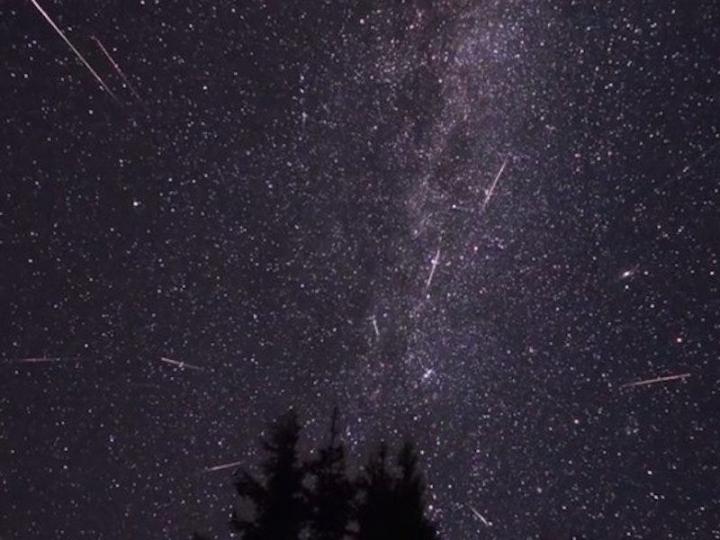
Morning of April 22: Lyrid Meteor Shower
Just in time for Earth Day, the Lyrids will peak (April 21-22). In dark skies, it’s a moderately active meteor shower that produces 10 to 20 meteors per hour. Normally, the peak happens in the predawn hours. However, there’s a bright Moon in the sky on peak morning (60% illuminated), so it will be best to watch in the late evening until moonrise on the night of April 21. For more details, see our 2022 Meteor Shower Calendar.

Mornings of April 24–26: Four Planets in a Row
Just before sunrise, use the crescent Moon as a guide and look for the planets. They are all lined up!
- On April 24, the waning crescent Moon appears below and west of Saturn.
- On April 25, the Moon is below and between Saturn and Mars; it has now passed Saturn, which is now to its east, and it lies west of Mars.
- On April 26, the Moon is below and between Mars and Venus; it has now passed Mars, hovering to the planet’s lower left (or east).
See the Almanac’s Bright Planets Calculator to find out when planets rise and set.
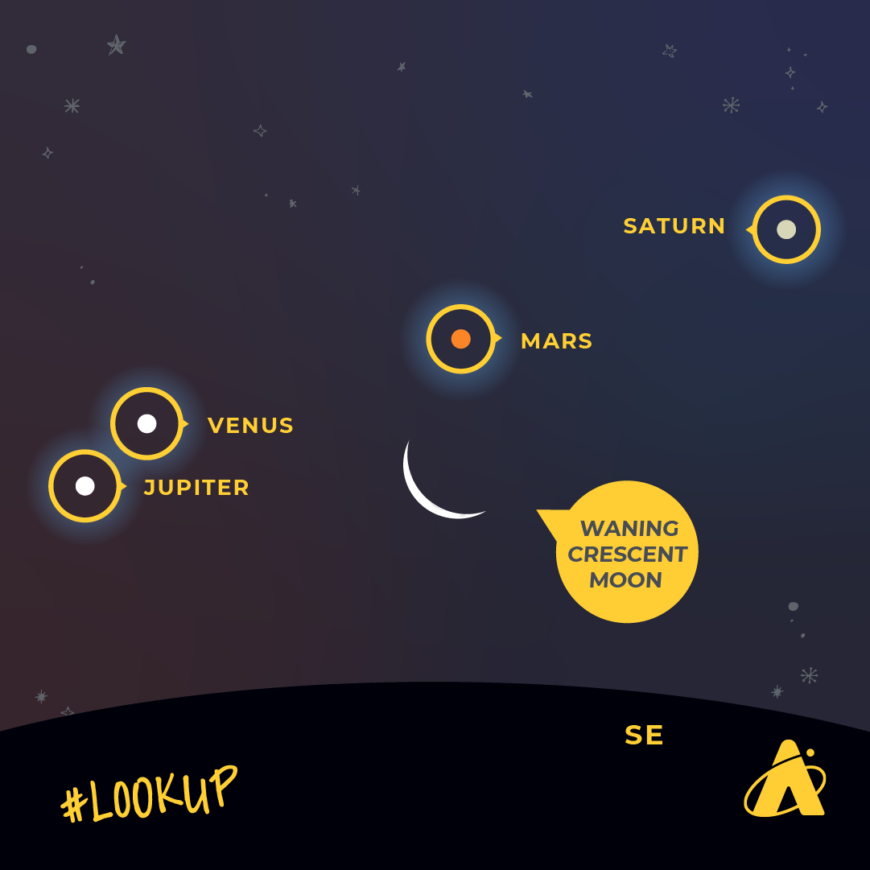
On April 26, see the Moon, Venus, Mars, Jupiter, and Saturn before sunrise. Credit: Adler Planetarium
Morning of April 27: Crescent Moon, Venus, Jupiter
Before sunset on the 27th, the sky’s three brightest objects—the Moon, Venus, and Jupiter—form a lovely triangle 15 degrees high. It’s quite low on the eastern horizon and only at dawn (60 minutes before local sunrise). Set your alarm and enjoy the show.
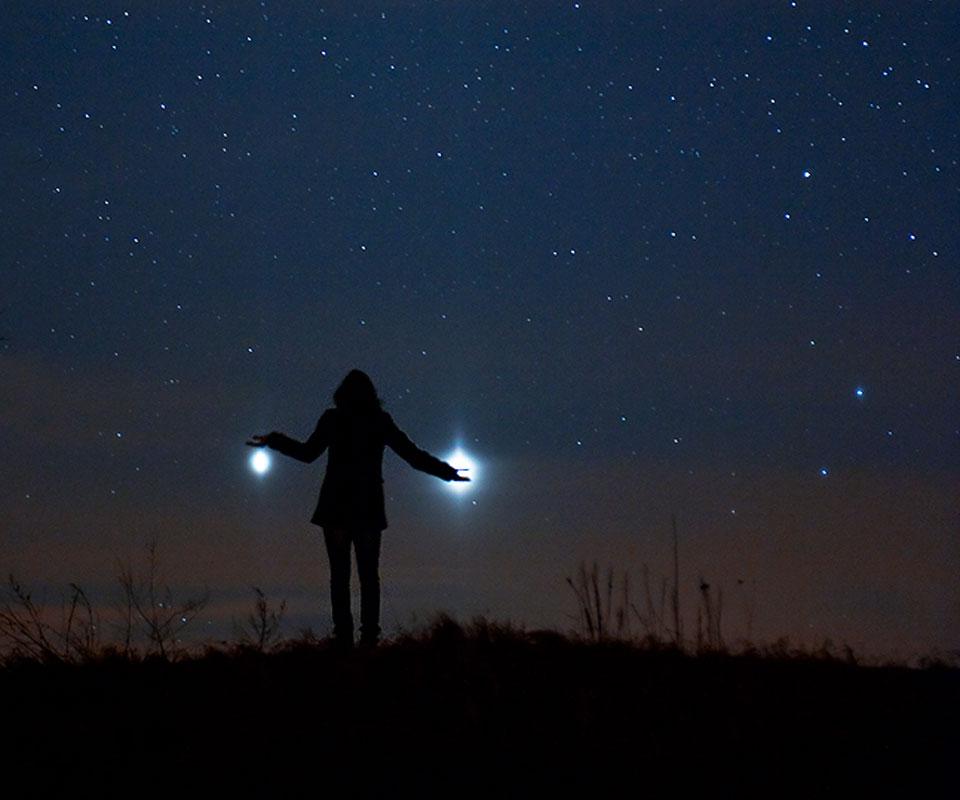
Conjunction of Jupiter and Venus from 2012. Credit: Marek Nikodem (PPSAE)
April 30: Venus-Jupiter Conjunction!
The month ends with a don’t-miss conjunction. Venus and Jupiter come extremely close together on Saturday morning, April 30. They will “appear to nearly collide into each other,” according to NASA. “Due to the glare from both planets, some observers will see them merge into one very bright, spectacular glow!”
It’s the day of the New Moon, so the skies should also be as dark as possible. Look one hour before sunrise. The two planets will appear to nearly merge. (On May 1, they flip sides and continue to glow.)
On the 30th, there is also a partial solar eclipse created by the new Moon. Unfortunately, it’s visible only from southern South America and Antarctica.
Belt of Venus at Sunset
With Earth Day falling in April every year, let us collectively appreciate the wonder and beauty of our home planet. Look at the sunset in the West and then spin yourself around to face East. What do you see near the horizon?
You’ll often notice a band of pink or orange-hued sky with a blueish band underneath. These bands move upward following sunset to form an arch over the sky that slowly fades as night sets in. The dark blue band is Earth’s shadow rising. Above it, the rosy-hued band is known as the “Belt of Venus.” The “Belt of Venus” is a cool phenomenon that forms an arch with Earth’s shadow at sunset! It’s a beautiful sight.

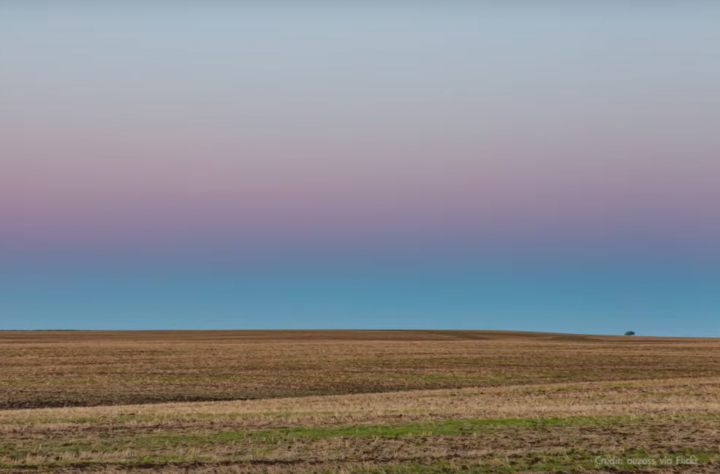
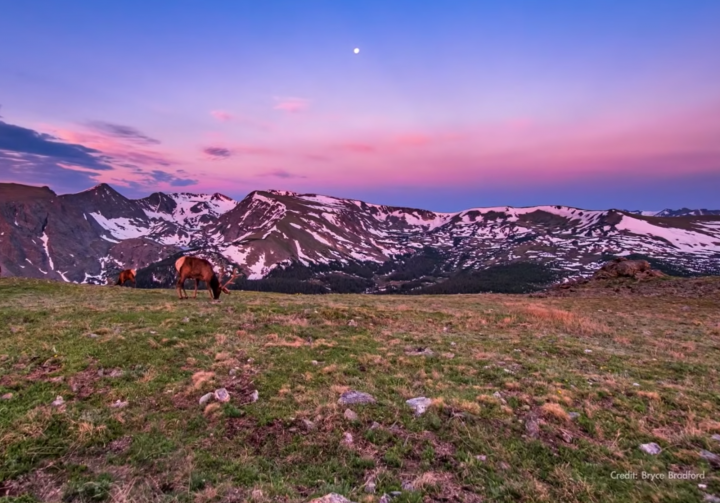

















Comments